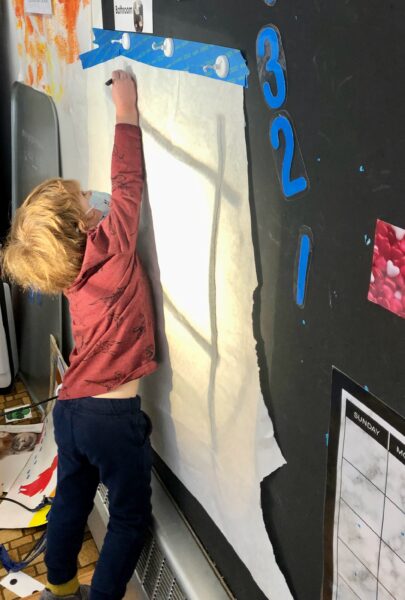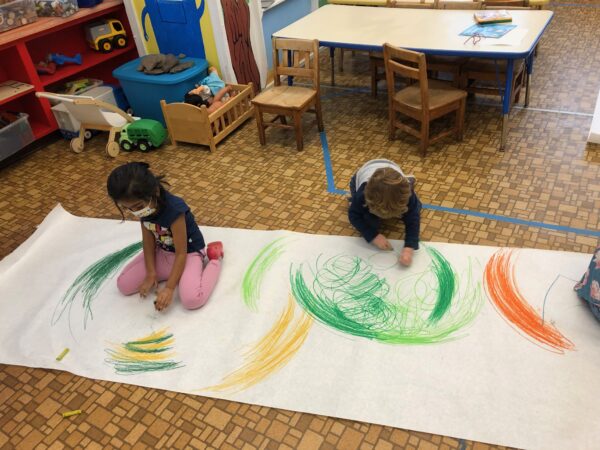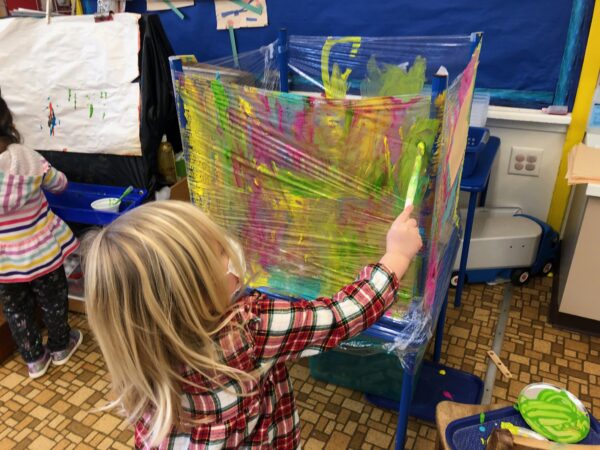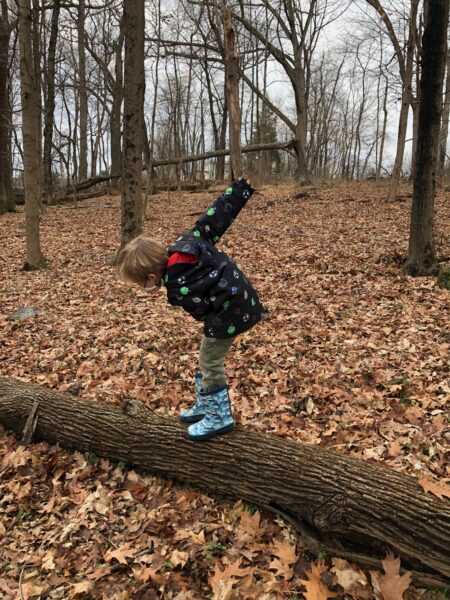Handwriting in Preschool
When people meet me in person for a tour, they tend to notice how passionate I get about teaching preschool, usually by my facial expressions, and my hands do fly when I’m excited! I just feel so strongly that preschoolers need teachers who understand child development, and understand that before “school readiness” comes something much more important: time to play, move, sing, dance, and socialize!
I started teaching over 41 years ago, the last 21 here at Rocky Hill Co-op. About ten years ago, I noticed that children were having difficulty rolling play dough into “ropes” or “snakes.” I had to have them stand up to apply more pressure. At the time, I was assuming it was due to the increase of screen usage at home. Then I read somewhere that with the implementation of the “Back to Sleep” movement in 1994, upper body strength in children had greatly diminished.
A bit of “history”: Before the Back to Sleep movement, many babies, my own included, were put to sleep on their stomachs, the thinking being that it was safer because if they vomited they wouldn’t choke. Babies were swaddled in receiving blankets, and were only swaddled until they started kicking the blankets off. Babies naturally could push themselves up on their arms, move around the crib, and there was no such thing as “tummy time,” because they had it all night long! My youngest was born in 1995. He was my first to have a car seat that you could carry from the house and attach right in the car. Prior to that, you picked up the baby in the house, carried them outside, and put them in the car seat. There was a lot of picking up and putting down! I read somewhere that the act of picking the baby up necessitated the need for the baby to engage muscles in their neck and core, and when they’re placed in a seat and moved from place to place, they don’t develop those muscles! Many babies now can remain swaddled for months with the new velcro and zipper sleepwear, further limiting movement at night. I’m wondering what the long term affect will be, or am I seeing them now?
Back to the play dough “snakes.” I was even more startled recently to see my students struggle with some paper punchers that I had purchased before 2007. (I know the approximate date, because I wasn’t yet the director, and I had to call to ask if I could purchase them!) Over the years, children needed to exert extra strength, but could use them independently.
I was shocked recently when I brought them out, and the children were unable to punch paper! I had them put their hands on top of mine and told them to push hard, and I felt very little pressure.
So… we’ve increased our morning song/movement routine!
I’ve mentioned this before. Every morning we sing, “Shake Your Sillies Out” by Raffi. We shake, wiggle, jump with two feet, balance on one foot, and hop. A year or so ago I added “hug” and “twist” because some children weren’t crossing midline. (Children who don’t cross “midline” (the imaginary line down the center of your body) will take a crayon with their left hand, draw to the center, then take the crayon with their right hand to finish.) This year we added “Ow your owies out,” because the class started singing “ow” to every motion! Now that we “knock on our heads,” the “ows” have a place of their own!
To address the lack of upper body strength, we’ve added a “bear walk” and a “crab walk.” I was again shocked to see many of the children couldn’t crab walk even half way around the room!
Ok, I know you’re thinking, what has this got to do with handwriting?
Everything!
Children develop gross motor movements before fine motor movements. They need to be able to support their bodies with their arms before they can use a paper punch. If they can’t exert enough pressure on a paper punch, their muscles aren’t developed enough to hold a pencil, let alone create lines, curves, and connect them together in a precise manner to form letters.
How do you address handwriting in preschool? If you understand developmental stages, you’re giving them pinch clothespins, pipettes, turkey basters, play dough, and opportunities to lace and sew. They squeeze things, crawl, and manipulate objects. They WALK on lines before they can write on them.
![]()

![]()
Children should be writing on vertical surfaces and drawing/painting use large movements.


Many times when adults expect children to write, they expect them to SIT STILL IN A CHAIR. Guess what? Children can’t sit for extended periods of time unless they have a strong core! How do they get that? By playing, climbing, running, and swinging! One thing that gets me SO angry is hearing that some three year olds are expected to sit at desks and write! That’s so wrong on so many levels! It’s no wonder there’s an increased amount of children in elementary school falling out of their chairs!

I truly believe that since children’s experiences were limited during the pandemic, we need to pay extra attention to the whole child even more than ever. Preschool needs to be fluid. Preschool teachers need to adapt the curriculum to meet the needs of the children they have at the moment, not who they are expect them to be in a few years. Hopefully, they have an in-depth understanding of HOW children learn, and can implement activities in a way that is fun and promotes curiosity, exploration, creativity and independent thinking.